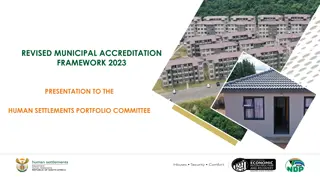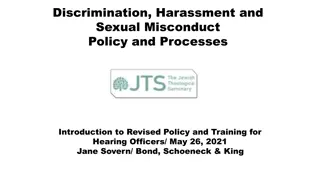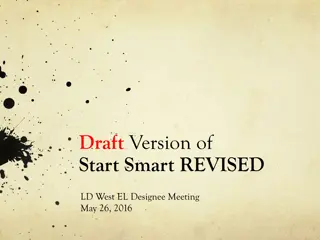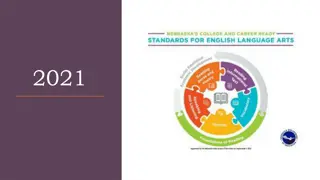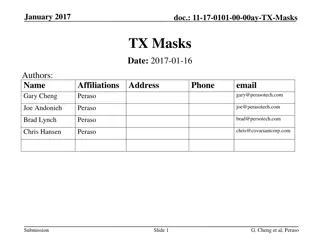
Exploring Challenges and Opportunities of Online Higher Education During COVID-19 at East Africa University
This study delves into the impact of COVID-19 on higher education, focusing on East Africa University in Bosaso. It examines the readiness of students and faculty to utilize technology for knowledge delivery, identifying challenges and proposing strategies for effective e-learning systems amidst the pandemic.
Download Presentation

Please find below an Image/Link to download the presentation.
The content on the website is provided AS IS for your information and personal use only. It may not be sold, licensed, or shared on other websites without obtaining consent from the author. If you encounter any issues during the download, it is possible that the publisher has removed the file from their server.
You are allowed to download the files provided on this website for personal or commercial use, subject to the condition that they are used lawfully. All files are the property of their respective owners.
The content on the website is provided AS IS for your information and personal use only. It may not be sold, licensed, or shared on other websites without obtaining consent from the author.
E N D
Presentation Transcript
Study Structure Setting the context Why this study? Study objectives Approach and Methodology The Results The Conclusion The Recommendations
Setting the Context The impact of COVID19 on the higher education sector Higher education post-COVID19: the good and the bad Will physical classrooms still continue to be a justifiable investment in a Post-COVID19 era? The peculiar case of Somalia COVID19 spawned a new online education industry creating new channels of knowledge delivery and opportunities for employment and wealth generation for hunders of enterprenuers
Why this study? COVID19 was yet another natural disaster that caught all of us by surprise. The Somali higher education sector which remains mainly unsupported by government subsidies has come to a situation where many were close to bankcruptcy and foreclosure Infrastructure (specially e-infrastructures) and the readiness of the people (students, faculty and staff) were limited The study focuses on the readiness of the people (students and faculty members) to utilize technology to delivery and/or consume knowledge The case study of East Africa University in Bosaso uncovers many of these challenges and proposes recommendations as to how we can deal with them
Study Objectives Identify the challenges and opportunities of utilizing e-Learning systems and related e-infrastructures to address and manage COVID19 crisis at the university Determine the availability and readiness of IT resources to the learners and teachers with the currently-used platforms and applications Propose strategies to implement the technology solutions during pandemics
Study objectives and the research question What are the challenges and opportunities in utilizing information technology in higher education during COVID19 at East Africa University in Bosaso?
Study Approach and Methodology The study employed descriptive survey design Description of the characteristics of COVID19 impact and the utilization of technology Exploration of the relationship between the varialbles Testing the hypothesis and development of generalizations and theories of universal validity The study used quantitative approaches where data has been collected and analyzed to support more accurate conclusions. Tools and procedures used: 3 types of questionnaires focusing on specific groups such as instructors, students, and ICT department staff
The Results Main challenges identified: Technical Academic Resource availability and readiness Communication issues Key findings are: Faculty members not trained sufficiently in ICT to effectively deliver lectures using technology Technological readiness at the university lacked and/or were not sufficient
Conclusion Specific challenges: Virtual classroom etiquette Inadequate interactions Time management issues with online learning Infrastructure limitations ICT readiness challenges on the part of the students ICTs created opportunities for the university to transform The university transformed its ICT infrastructure The university started considering delivering programs beyond Bosaso city
Recommendations Universities must see technology as a strategic capability and invest in ICT infrastructure Service providers need to restructure their services and support the higher education institutions in the efforst to tackle the impact of COVID19 through zero-rating schemes and other CSR initiatives Governments should have policies in place to improve the general e- readiness of the universities University infrastructure should not only mainly focus on e- infrastructures at the campus but also on schemes that enable students to own access devices (laptops and tablets) for education


